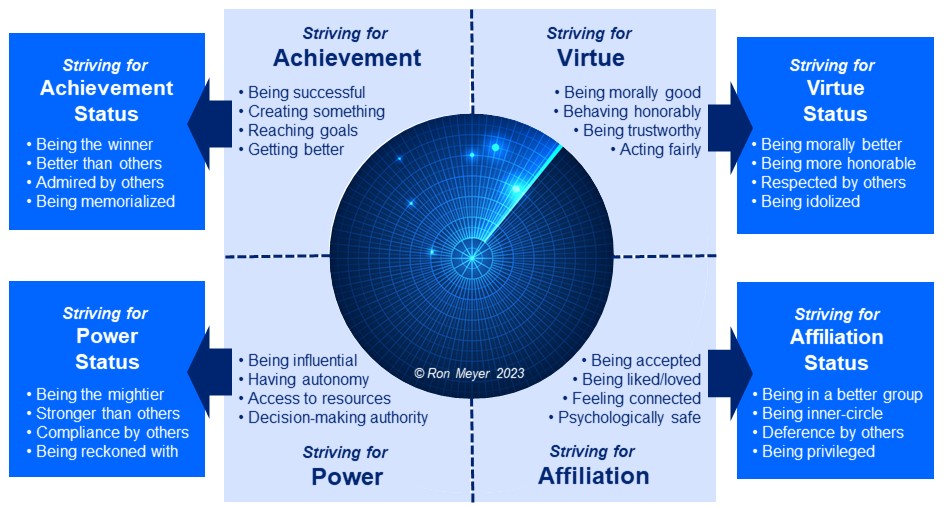Motivations are the reasons why people intentionally do something – they are the goals driving people’s behaviors. Of course, many other psychological forces also influence how people think and behave, such as emotions, routines, beliefs, and personality. But humans are willful beings and much of their behavior is motivated by striving towards certain goals.
When people’s motivations are consistent over time, they have an ambition – they are, consciously or unconsciously, aiming to realize some fundamental objective. An ambition is the overarching theme – the leitmotiv – driving much of their actions.
The Ambition Radar Screen builds on the work of McClelland (1961) to outline the four main motivational factors driving people’s behavior (tagging on virtue to McClelland’s achievement, affiliation, and power). The model adds an extra layer by indicating that people might desire each factor in its own right but might also be motivated by the status attached to each – the social standing flowing from the factor might be a goal in itself. The radar screen metaphor emphasizes that the model is not intended for mapping and understanding people’s psychology in detail, but to have an early warning of “where each person is coming from”.

The four main motivators making up a person’s ambition are the following: